Introduction
Desktop virtualization is one of the most effective ways for end-user environment optimization and control. Key benefits of virtualization are:
- centralized resource management
- easy administration
- enhanced security
- high availability
- scalability and flexibility
VDI relies on the following components:
- Hardware – hyperconverged infrastructure consisting of vSAN Ready All-flash rack-mounted servers
- Software – VMware vSphere/vSAN environment combined with VMware Horizon 7 platform for centralized VDI management.
Hardware
Base
The hardware base consists of standard industrial rack-mounted servers capable of supporting vSAN storage virtualization (vSAN Ready Nodes). It offers excellent flexibility and reliability combined with easy implementation and maintenance. It also lowers capital and operational expenses because infrastructure is based on standard servers and their disks, so a separate storage system is not required. Since end-user experience is critical for VDI, performance is guaranteed by using SSD drives only.
Cluster Parameters
The minimum vSAN cluster consists of three nodes. The number of nodes, as well as their specifications (CPU, RAM, disk capacity, etc.), is determined by multiple factors:
- number of users and type of work
- VLAN configuration
- estimated infrastructure growth
- current IT environment
- client-specific requests
Network Resources
For vSAN implementation, the proper network infrastructure is the crucial component. Due to distributed nature of vSAN, consisting of many local disks, it is necessary to make the connection between them quick and reliable. Therefore, each ESXi host needs to have a dedicated vSAN network, properly configured, with the following prerequisites:
- Minimum 1 Gbps for hybrid configurations and 10 Gbps for All-flash
- Each host must have a dedicated vmkernel adapter for vSAN traffic and be connected to the vSAN network. This is required even if specific host’s disks do not participate in total vSAN capacity
- The maximum latency between any two hosts for the standard vSAN cluster is 1 ms.
For full redundancy, it is recommended that each host has two network adapters dedicated to vSAN. If 10 Gbps cards are used, vSAN traffic can share resources with other system traffic types (vMotion, HA, VM…). In that case, it is a good idea to guarantee bandwidth for vSAN using Network I/O control options on the distributed switch. Besides that, vSAN traffic can be prioritized with high CoS parameter values (Class of Service).
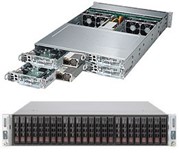
Disks
As mentioned, only SSD drives are considered. Choosing appropriate vendor and device parameters depends on a specific implementation. Each vSAN cluster consists of multiple disk groups, each having separate disks for caching and data store purposes (cache/capacity tear). In All-flash configuration, cache is used as a write buffer only because there is no need for caching during read operations.
Intel Optane
High-performance systems, requiring high bandwidth and low latency, caching tier can be configured with non-standard SSD drives based on Intel Optane solution. It is a new way of storing data, separate from standard floating-gate MOSFET technology.
With traditional flash memories, basic capacity units are cells, and their state is defined by the charge they hold, which is controlled by transistors and capacitors. Intel Optane uses the change of the material’s electric parameters, which results in cell resistance change. It enables much faster state changes. Also, cells can be organized into 3D structures (3D XPoint – Figure 2), which provides greater density and capacity.
In the vSAN environment, caching tier is heavily hit by write operations, so it is necessary to use highly reliable disks. On the other hand, capacity tier usually gets read requests with occasional write requests from caching tier. Therefore, it can contain less reliable and cheaper disks. Figure 3 shows typical Intel Optane use within the vSAN cluster.
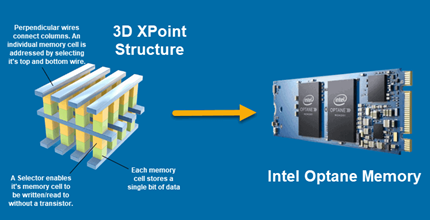
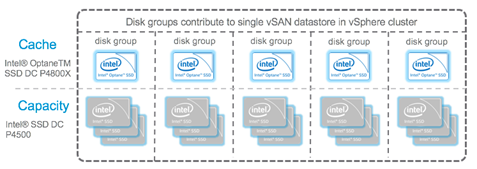
Software
Base
The software base consists of VMware vSphere infrastructure with vSAN as a storage solution. The main component for implementation, management, and monitoring of VDI is VMware Horizon 7 platform. Basic configuration and most common use cases assume that users access virtual machines using PCoIP, Blast Extreme, or RDP protocols. Besides that, it can be used to connect to physical machines and utilize Microsoft Remote Desktop Services (RDS). Application virtualization (ThinApp) and distribution by virtual disks (App Volumes) are additional features, simplifying implementation, migration, and lifecycle management.
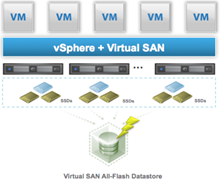
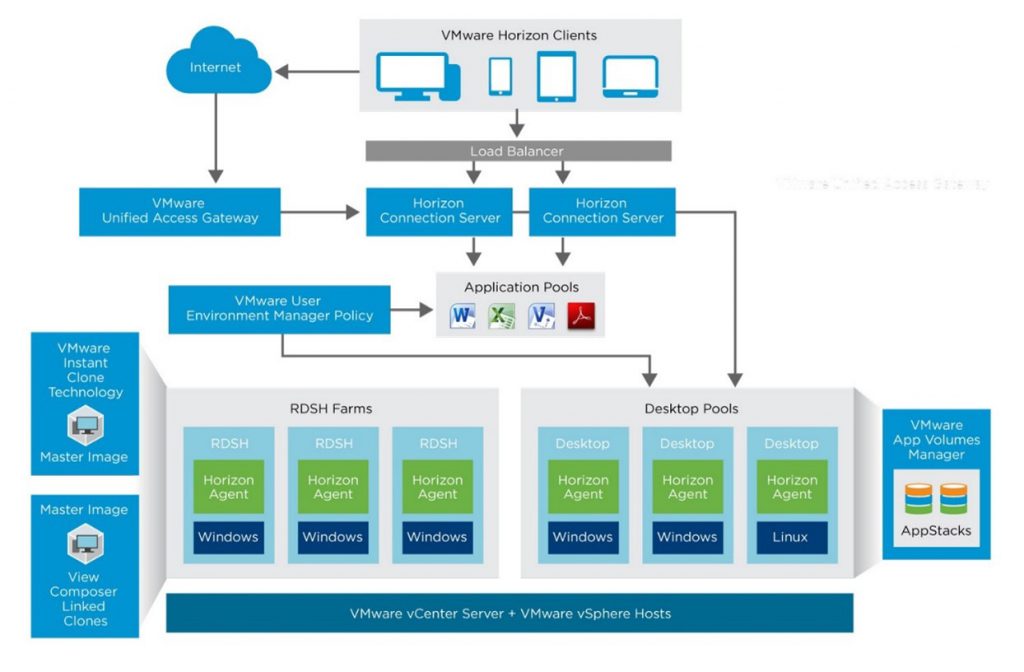
Editions and Licensing
Available features depend on the Horizon 7 edition: Standard, Advanced, or Enterprise. There is also an edition for Linux users – Horizon for Linux.
Tables 1 and 2 contain specific components that makeup Horizon 7 platform. Some editions also include vSphere/vSAN licenses, but most of the components can be separately licensed based on client needs. Table 3 contains more license details for all editions.
For clients already having vSphere/vSAN infrastructure implemented, Horizon Add-On packages offer only licenses for desktop virtualization (Table 4).
There are two licensing models inside Horizon 7:
- Per named user (NU) – suitable for environments that require dedicated user machines. Each user requires one license. This licensing model is not available for Standard and Horizon for Linux editions.
- Perpetual per concurrent connection (CCU) – suitable for larger environments with multiple users sharing virtual machines during the day (e.g., students or shift workers). In this case, the main parameter is the number of users concurrently using the system at any time. For instance, 200 users working in two shifts (100 in each) would require 100 licenses.ž

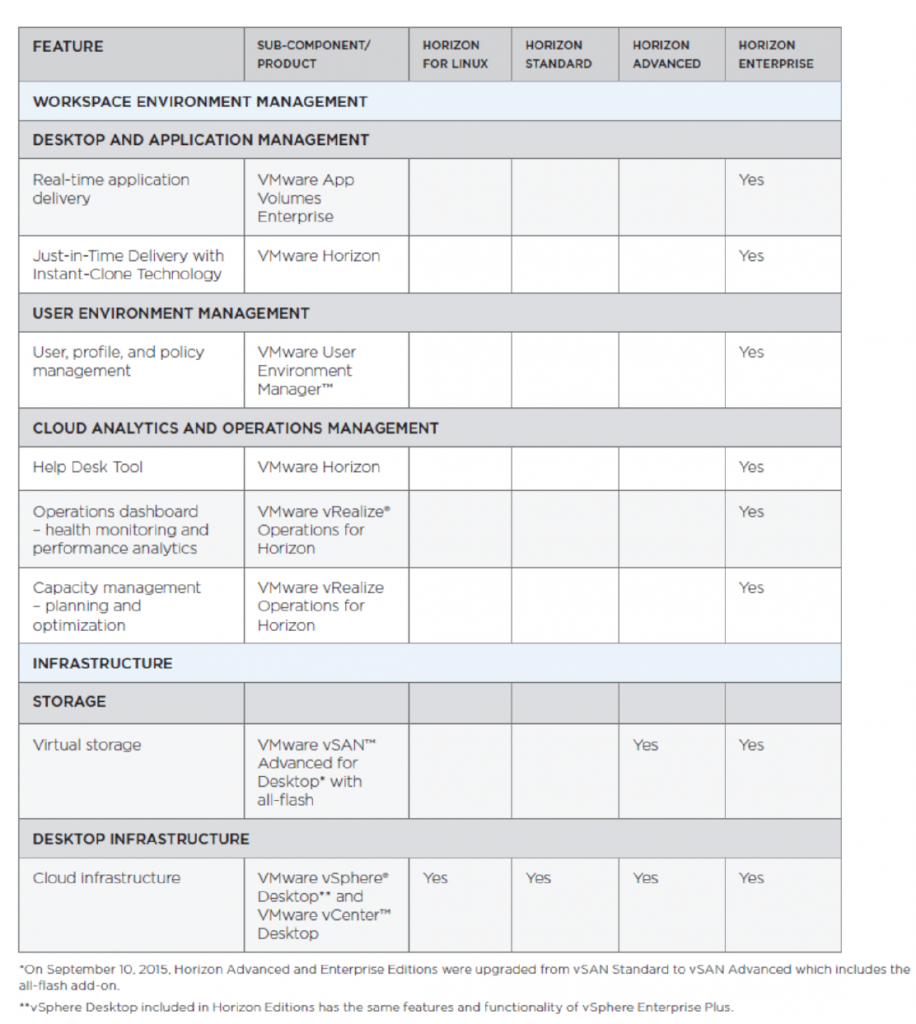
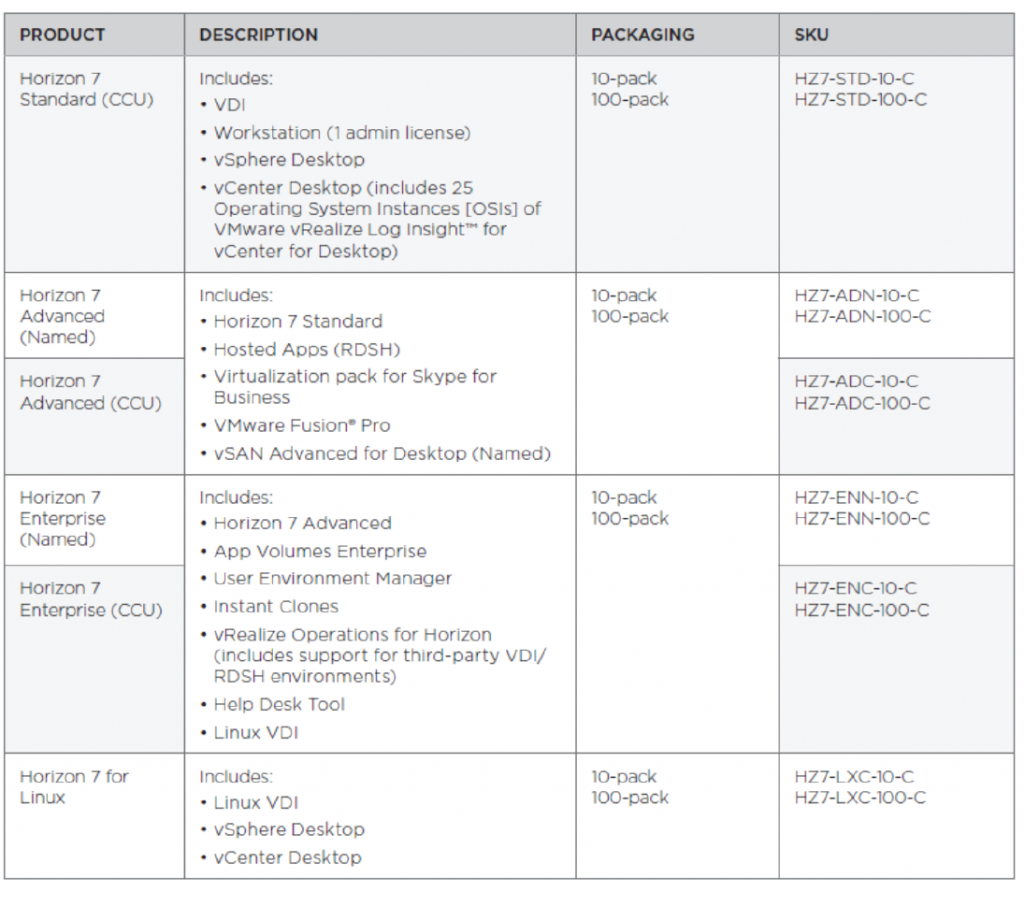
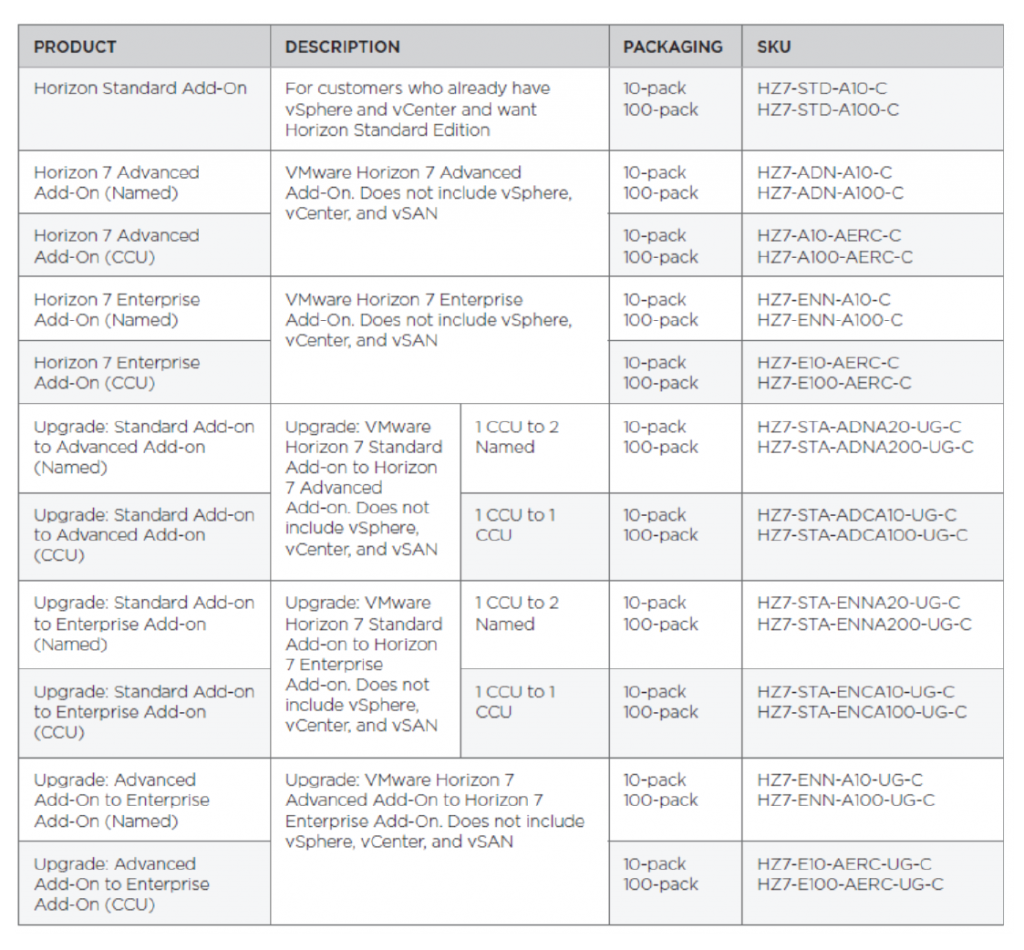
Specific implementation depends on client needs and capabilities, as well as the overall IT infrastructure condition. In the case of significant user growth, the vSAN environment enables simple to scale up/out to meet the demands. Horizon 7 edition and licensing model is defined by available features described in the above tables.
It is essential to notice that the Named licensing model does not support NSX. Therefore, if the client plans to virtualize network resources, it is recommended to use the CCU licensing model.
Read in our next blog: Client access, profile management, and more…
For any additional information or question, please contact us at office@braineering.rs

Very good written information. It will be useful to anybody who employess it, as well as me. Keep doing what you are doing canr wait to read more posts.
storage virtualization solutions implementation in New York